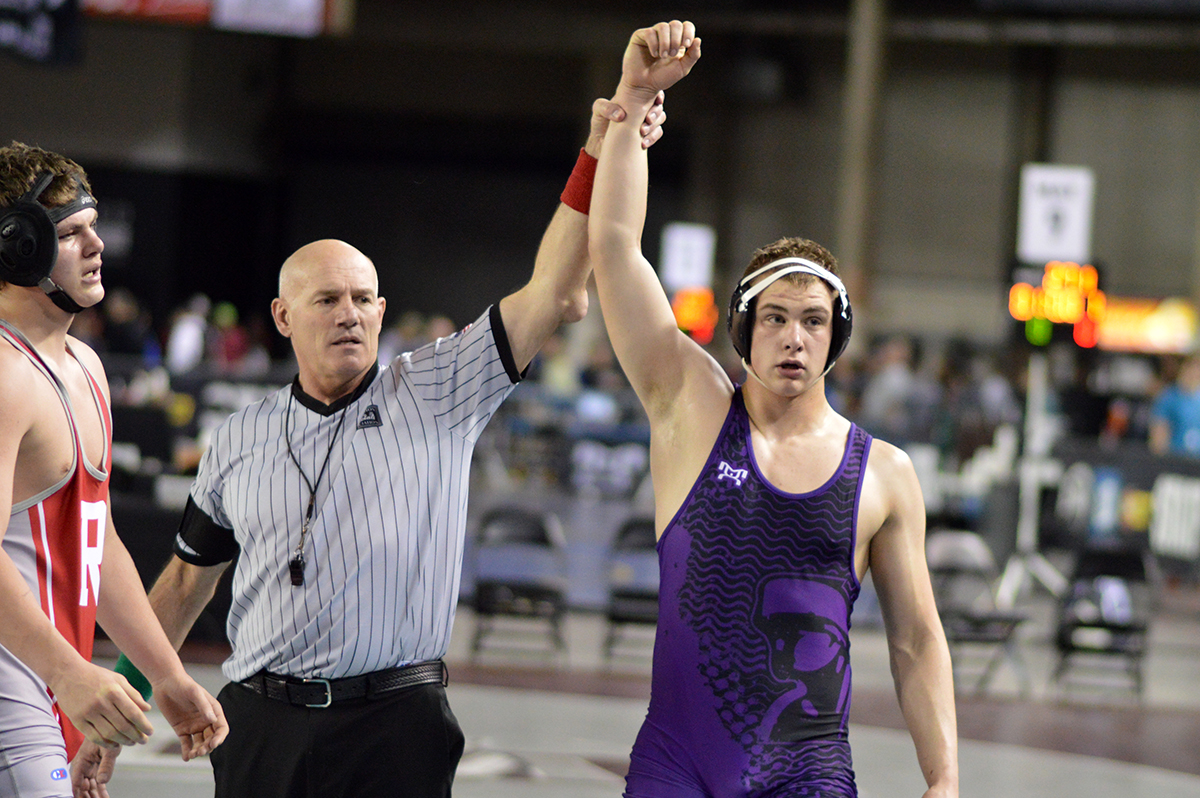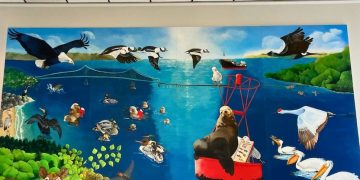Montana – Brenner Flaten has been counting down the days to Jan. 2, 2021.
As anxious as Flaten, the Glasgow High School athletic director, is, imagine the anticipation the Scotties’ winter sports student-athletes have had.
Glasgow is one of dozens of schools set to return to high school sports competitions this weekend, after the Montana High School Association previously delayed the beginning of winter activities to Jan. 2 to avoid the potential spread of the coronavirus. Glasgow’s basketball squads host Malta, while the reigning Class B state wrestling champion Scotties travel to Columbus to square off against Columbus and Huntley Project.
Those contests have been finalized for some time now, but when Flaten, along with other small-school administrators, players and fans, caught wind of an email request from the Class AA superintendents to the MHSA asking for a postponement to the start of winter sports, it didn’t sit quite right.
“I think that when you read that just out of the blue, you are wondering who is speaking for you, I guess, because we can only go by what we’ve experienced in Class B and these area Class A and Class C schools that we compete with and have competed with all fall,” said Flaten, a former Glasgow Scottie student-athlete himself. “So, when I see a request like that, it doesn’t really necessarily match up with what we’ve experienced. So it would be kind of a bit of a head-scratcher as to why.”
The MHSA acknowledged Class AA’s request but stuck with its original plans of beginning winter activities on Jan. 2, then evaluating the updated COVID-19 information prior to its annual January board meeting on Jan. 11. Winter practices were allowed to begin on Dec. 7.
That means, for now at least, it’s full steam ahead for schools like Glasgow.
“We do, we want to play, we want to compete. We just don’t want to have anything taken out from underneath of us, we don’t want the rug pulled out from underneath of us,” said Flaten, who said every Class B athletic director he had spoken with planned on moving forward with winter sports on Jan. 2. “We don’t want a one-size-fits-all situation. You know, if the AA elects to (delay its season), the AA could do that type of thing. They’re not competing against any of us anyways. They have their own AA-only schedules for basketball and they have their own AA schedules for wrestling now, so it’s entirely up to the AA if they want, as far as I’m concerned, to start later on. It doesn’t need to affect us at all.”
It’s no surprise Montana’s Class AA cities have seen higher cases of the coronavirus — Yellowstone County leads the way with 13,832 cumulative cases, while Gallatin County (9,278 cumulative cases), Flathead County (8,831), Cascade County (6,642), Missoula County (6,345), Lewis and Clark County (4,805) and Silver Bow County (3,055) have all seen higher numbers than the rest of the state, according to the Montana COVID website.
Valley County, of which Glasgow is the county seat, has seen 644 cumulative cases, and none were Scotties student-athletes, per Flaten.
“It had minimal effect on us from a scheduling standpoint. Yes, of course we had some postponements along the way, but those postponements were because of our opponent’s situation and not necessarily ours,” said Flaten. “We were really fortunate this fall, and I went into the season communicating with our coaches, communicating with our parents that, we’re just going to have to be ready for change, change on the fly and we can’t just assume that our schedules are going to stay the same and nothing’s going to happen. At that time I was saying, if we think we’re going to go through the whole season without a positive COVID case, you know, that would be pretty unique. Well, we did, we went through the whole fall sports season with nothing in our programs for cross country, football and volleyball.
“We ended up playing 24 volleyball matches this year — 18 maximum in the regular season and another six in the postseason. We were probably one of the very few schools in Montana that played nine regular-season football games and followed that up with three playoff games. That’s the first time in school history that we’ve played 12 varsity football games in the fall. And then cross country, we competed in our maximum allowed cross country meets this fall. So, across the board, our fall sports, not to say it wasn’t without its challenges because it was — there was rescheduling, there was adjustments on the fly — but that’s just part of it. To me, it’s worth that extra effort and extra work to make sure and ensure that our kids have these experiences and that they continue to be able to compete and have activities. Yeah, we had a lot of reschedules, but in the end we rescheduled and played them all.”
Flaten said Glasgow students were involved in contact tracing, and some were forced to miss competition while under quarantine guidelines. That “opened some eyes for some of our kids,” he said, as did the recognition of what other states across the country were doing in regards to the coronavirus pandemic, with states like California opting out of athletics until at least Jan. 25, according to the state’s latest guidelines for reopening.
“We can see what Washington has done, some of these other states where these kids haven’t been as fortunate, even going as much as parents having to move their kids across state lines and things like that just so they can participate,” said Flaten, “so, I think they’re very happy and fortunate to our situation with COVID and where they live.”
The Class AA superintendents’ request for postponing winter sports focused on a potential rise in COVID-19 cases following the Christmas holiday break. Great Falls Public Schools superintendent Tom Moore acknowledged no rise in cases was seen following the Thanksiving break, but it remained to be seen the effect a longer hiatus may have on the spread.
According to data from Montana’s COVID website, there were 1,141 daily cases on Nov. 21, the final day of the fall sports season. Two days in December — Dec. 1 (1,091 cases) and Dec. 3 (1,248 cases) — have crossed the 1,000-case threshold, with the December daily average around 644 daily cases. Montana didn’t reach that mark until October during its drastic increase in daily cases, which eventually topped at 1,633 on Nov. 13, but the state has seen a steady decrease since that date. Though, at the time of this publication, cases have risen in each of the past three days.
“One size does not fit all in this situation. You could look at it from a lot of different ways: Montana in general is not Florida, is not New York, so right there, we already have seen the states handle their fall sports seasons different all across the country. We know what Washington, Oregon, California have done, but we have also seen what we were able to do in Montana, North Dakota, South Dakota, Wyoming, Idaho, it really went off without a hitch, really, and for very effective seasons,” said Flaten. “So there’s no one-size-fits-all there. And then, the same way within the state when you’re looking at the AAs as a whole, those Class AA communities, their numbers and their spread as opposed to ours in a small, isolated community in eastern Montana or a lot of our Bs and Cs are across the state. We all know that everybody deals with it a little bit differently because their situation turns out to be different.”
“I think I echo what a lot of administrators would say, and ADs, is just that our kids and coaches have continually done what we’ve asked them to do, jumping through all the hoops and made sure that we’re being as safe as possible, that we’re following CDC guidelines,” he continued. “We’re making sure that we’re staying masked up. We’re disinfecting everything that we can. We’re going to continue to do all those things and take all those steps to assure that it doesn’t get taken away from us. The stance that MHSA took from the beginning of the season, I think is great. And I fully expect them to take the same stance this winter as they did in the fall, which is basically if you’re healthy, you’re able, your team’s not shut down, you’re competing. If a certain team or certain individual is in quarantine or a certain individual has contact trace, then they’re out. And that’s just the way it goes.”














